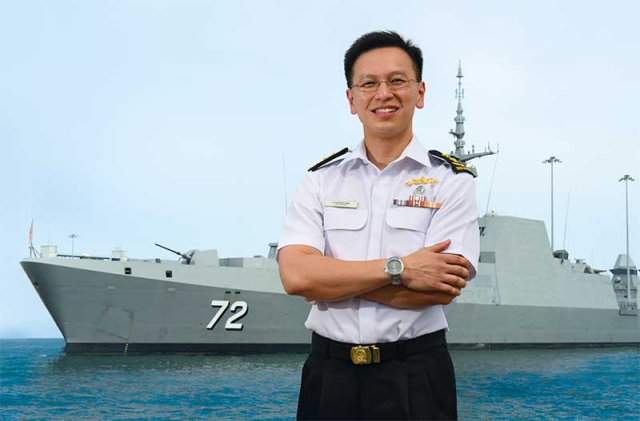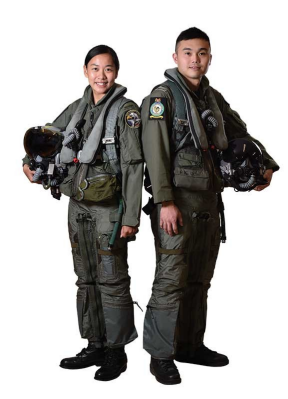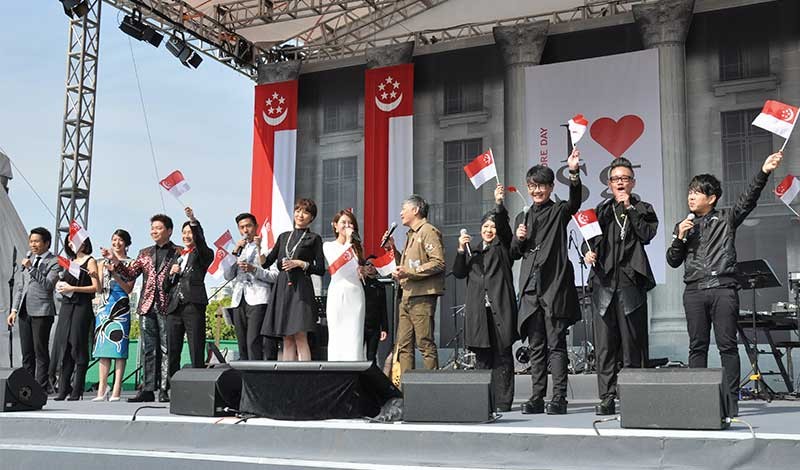We speak to Chief of Navy Rear-Admiral (RADM) Lai Chung Han and find out what the Navy plans to focus on over the next few years.
The Republic of Singapore Navy (RSN) has come a long way since its formation in 1967. Having just celebrated its 48th anniversary on 5 May, RADM Lai gave an overview of the Navy's continuing efforts in becoming "sharper, smarter, and stronger".
During the interview with local media at Changi Naval Base on 8 May, he noted that the Navy was dealing with a more complex operating environment with non-conventional threats like terrorism, piracy and natural disasters.
To combat these challenges, RADM Lai emphasised the need to upgrade the Navy's capabilities, infuse more innovative solutions into their work processes, and explore alternative sources of recruitment.
New and improved assets
"Over the last few years, we've completed the upgrading of our Missile Corvettes (MCVs). The ScanEagle unmanned aerial vehicles (UAVs) were added to enhance their maritime surveillance abilities.
Our Mine Countermeasure Vessels have also been upgraded (to scan, identify and clear mine-like objects more quickly and effectively) while our Landing Ships Tank and frigates are in the process of upgrading.
Two new Type 218SG submarines will be replacing the Challenger-class submarines and they'll come into service post-2020.
Eight Littoral Mission Vessels (LMVs) will be replacing our Fearless-class Patrol Vessels. These are far more capable, far more versatile and they'll take us into the future.
We've decided to name the LMVs after the ideals that the late Mr Lee Kuan Yew and our pioneers fought for, and the attributes that they exemplified. These include independence, sovereignty and justice."
Unmanned systems
"Whether it's the ScanEagle UAV on our MCVs or the Protector Unmanned Surface Vessel deployed to the Gulf of Arabia for the protection of oil platforms (in 2005), we are looking at (integrating them to) work seamlessly together with manned platforms.
The LMVs will be a key platform to do this and we envisage that going forward, the LMV will have a number of unmanned surface vessels under its control so that it has (a range) of choices and capabilities to respond to (various) situations."
Innovative ideas
"These days, we are designing the ship's capabilities around its logistical requirements (instead of the other way round). For instance, the LMV's mast is designed such that 90 percent of the active components are accessible at sea and alongside the harbour. This allows repairs and maintenance to be made much faster if an irregularity is detected. This helps to save effort, time and resources when it comes to engineering support and maintenance."
Fighting against piracy
"We are working with other littoral states to extend our successful model of piracy deterrence in the Malacca Straits to the lower region of South China Sea, where the piracy hotspots are.
Bilaterally, we are working very closely with Indonesia and Malaysia through our Information Fusion Centre. We've exchanged information and given them heads up where there's an incident. There have been a number of cases where we have been able to respond very expeditiously to disrupt (potential pirate attacks) because of this close working relationship."
Attracting more talent
"Ten years from now, the National Service (NS) cohort will shrink by 20 to 25 percent due to declining birthrates. This is going to be challenging for us in terms of manpower.
We have considered having an Operationally Ready National Servicemen (NSmen) battalion in the Navy and we are also exploring the possibility of NS units operating unmanned systems in the future.
We also intend to attract more women and mid-careerists to join the Navy. Today, seven percent of our workforce is made up of servicewomen. That number is far too low in my view. Our commitment is to double that in 10 to 15 years' time. It's not just about numbers and filling the ranks, but also to have more women in leadership.
For mid-careerists... the Navy is not just a viable but an attractive second career. But they must also bring value to the organisation. Those already in the engineering sector, merchant navy, safety officers and even lawyers are welcome.
Our value proposition is not only the remuneration, but the attractive career we will present, opportunities for upgrading, but most importantly, a very different sense of purpose and mission."
Punch above our weight
"The only reason why people will talk to us - the Japanese, the Americans, the Chinese - is because we have the capability. When they exercise with us, it's not just notional or about defence relations. They get professional training from working with us.
Because we are sharper, smarter and stronger, we become a partner of choice."







